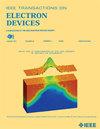GT3: An Open-Source 3-nm GAAFET PDK and Platform for End-to-End Evaluation of Emerging Technologies
IF 2.9
2区 工程技术
Q2 ENGINEERING, ELECTRICAL & ELECTRONIC
引用次数: 0
Abstract
In this article, we present a comprehensive end-to-end evaluation platform for various front-end-of-line (FEOL) and back-end-of-line (BEOL) technology options at the 3-nm technology node. Based on TCAD modeling of FE and BE, we have developed a 3-nm GAAFET-based process design kit (PDK). We have developed a 6-track standard cell library including 65 cells with a library height of 144 nm. Based on TCAD modeling of interconnects, we have evaluated the resistance of the entire BEOL stack using ruthenium for lower metal levels (M0–M3) and copper for higher metal levels (M4–M13). Based on place and route (PnR) studies using our PDK, we have analyzed the impact of high aspect ratio (AR) Ru interconnects at M2 and M3 in terms of performance using benchmark designs. Our results show that using Ru interconnects improves the circuit performance by up to 10.4% compared with Cu interconnects and that increasing the AR generally results in performance degradation due to the increase in capacitance and via resistances. We have observed a 5.9% and 4% degradation in performance for AES and LDPC, respectively, when moving from AR2 to AR6 local interconnects. However, adding an airgap can improve the higher AR Ru interconnect cases and AR4 with airgap case shows the most performance improvement with an overall 19.7% improvement compared with Cu. This case study also serves as an example that shows the importance of an end-to-end evaluation platform.GT3:用于新兴技术端到端评估的开源 3 纳米 GAAFET PDK 和平台
在本文中,我们提出了一个全面的端到端评估平台,用于各种3纳米技术节点的前端线(FEOL)和后端线(BEOL)技术选项。基于FE和BE的TCAD建模,我们开发了一个基于3纳米gaafet的工艺设计套件(PDK)。我们开发了一个6轨标准细胞库,包括65个细胞,库高度为144 nm。基于互连的TCAD建模,我们评估了整个BEOL堆栈的电阻,使用钌用于较低金属水平(M0-M3),铜用于较高金属水平(M4-M13)。基于使用PDK进行的位置和路径(PnR)研究,我们使用基准设计分析了M2和M3处高宽高比(AR) Ru互连对性能的影响。我们的研究结果表明,与Cu互连相比,使用Ru互连可使电路性能提高10.4%,并且由于电容和通孔电阻的增加,增加AR通常会导致性能下降。我们观察到,当从AR2本地互连移动到AR6本地互连时,AES和LDPC的性能分别下降了5.9%和4%。然而,添加气隙可以改善更高AR的Ru互连情况,并且与Cu相比,具有气隙的AR4表现出最大的性能改善,总体提高了19.7%。本案例研究还作为一个示例,展示了端到端评估平台的重要性。
本文章由计算机程序翻译,如有差异,请以英文原文为准。
求助全文
约1分钟内获得全文
求助全文
来源期刊

IEEE Transactions on Electron Devices
工程技术-工程:电子与电气
CiteScore
5.80
自引率
16.10%
发文量
937
审稿时长
3.8 months
期刊介绍:
IEEE Transactions on Electron Devices publishes original and significant contributions relating to the theory, modeling, design, performance and reliability of electron and ion integrated circuit devices and interconnects, involving insulators, metals, organic materials, micro-plasmas, semiconductors, quantum-effect structures, vacuum devices, and emerging materials with applications in bioelectronics, biomedical electronics, computation, communications, displays, microelectromechanics, imaging, micro-actuators, nanoelectronics, optoelectronics, photovoltaics, power ICs and micro-sensors. Tutorial and review papers on these subjects are also published and occasional special issues appear to present a collection of papers which treat particular areas in more depth and breadth.
 求助内容:
求助内容: 应助结果提醒方式:
应助结果提醒方式:


